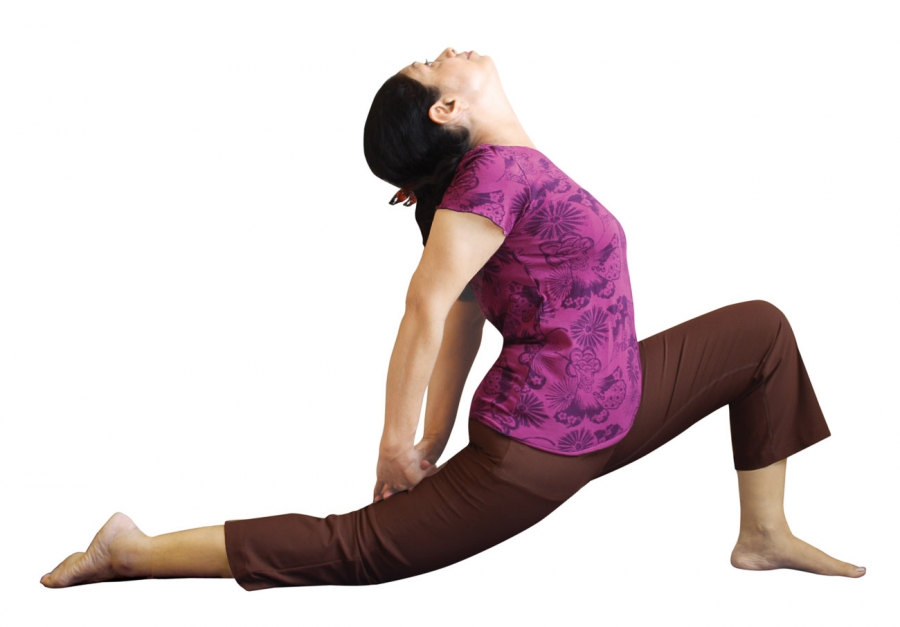Yoga is a systematic discipline and an amazing inward journey that illuminates the practitioner’s life beyond pain and suffering. It is a soothing balm that heals and strengthens and way of life that moulds the personality of the practitioner, bestows love, knowledge, wisdom and good health. Practicing yoga provides relief for many health issues like headaches, arthritis, back pain, high blood pressure, diabetes and other ailments, caused due to high stress and unhealthy lifestyles. It also removes negative emotions and ego, develops confidence, and promotes peace and lasting happiness.
Yoga is a gift for all ages and a boon for the old age. Practising yoga infuses vitality, develops abilities to adapt well to changing situations, accept reality, slows and reverses the ill effects of ageing, and makes those extra years meaningful and wonderful. It is never too late to start praticing yoga; one can start yoga even after attaining age sixty. Yoga is a positive choice that will change your life.The only necessity is, to learn yoga from a knowledgeable and experienced teacher who will understand the needs and provide suitable guidance and right knowledge.
What is Hatha Yoga? Hatha Yoga is an important branch of yoga and the most popular health promoting discipline in the world. Its origin is traced to the writings of Swami Swatmarama, the first book on asanas and pranayama written in the 15th century and is popularly called ‘The Hatha Yoga Pradipika’.
Ha means sun and Tha means moon. Hatha means willful or forceful. Hatha Yoga is a discipline that connects, integrates and balances the two sides of the body. Sun or masculine is the right side, while moon or feminine is the left side. Both sides of the body provide energies for stability, strength, and balance.
What is mind and what effects does Yoga have on the mind?
The mind or manas is a store house of desires, thoughts and emotions. The thought waves or Vrittis, form impressions or grooves in the mind. Every time a thought is repeated, impressions become deeper and it becomes difficult to remove them. The thought waves are like a record player that goes on and on, moving from one thought to another, from present to past and surface as pleasant or unpleasant memories. Pure, pleasant and selfless thoughts bring peace and joy, while impure, unpleasant, selfish thoughts bring pain and misery.
Swami Satyananda Saraswati has said: The aim of teaching yoga is to help people unfold their potential and become relaxed and strong. When the mind is peaceful, it becomes powerful. It can become a receptor of bliss and wisdom, enabling life to become a spontaneous flow and expression of joy and harmony. However this inner silence cannot arise while there is a continual stream of disturbing thoughts and emotions. All this inner noise has to be removed before one can truly experience the soundless sound of inner silence.
Practicing Yoga helps to calm the inner noises and brings balance to the body with the practice of asanas and pranayam.
What are the Powerful Tools of Yoga?
The most basic and powerful tools of yoga are Asanas and Pranayam.
Asanas are specific geometric postures designed to suit the anatomy of human body. They are much more than physical exercises because they provide perfect mind-body ease and balance. Asanas connect body and mind through the breath, remove blocks, mobilize inactive muscles and joints and promote complete ease. Asanas are named after sages who created them, named after animals, birds, insects, trees because they outwardly resemble them.
Sage Patanjali the father of yoga, defined asana as Sthira, Sukham, Asanam. Sthira means stability, steadiness, firmness, Sukham means ease, relaxed, comfortable. Asanam means postures. Through deep awareness and proper inner adjustments, one can accomplish Sthiram and Sukham in every asana. Sage Patanjali has reiterated that, it takes several years of regular and dedicated practice to accomplish perfect mind-body integration and experience Sthiram and Sukham in every asana. Asanas are performed with deep awareness and the movements are guided by the breath.
Pranayam: Prana is the cosmic energy or the life force without which nothing moves or functions. Pranayama is expansion of inhalation and exhalation of breath in a specific manner. It is a scientific process of internal purification that draws the mind inwards and connects the practitioner to deeper levels of consciousness. Pranayama refreshes the brain, enhances lung capacity, removes stress, calms the mind heals and relaxes.
You can find more information on Yoga and Yoga Therapy from Geeta Iyers book - Illuminating Lives with Yoga

